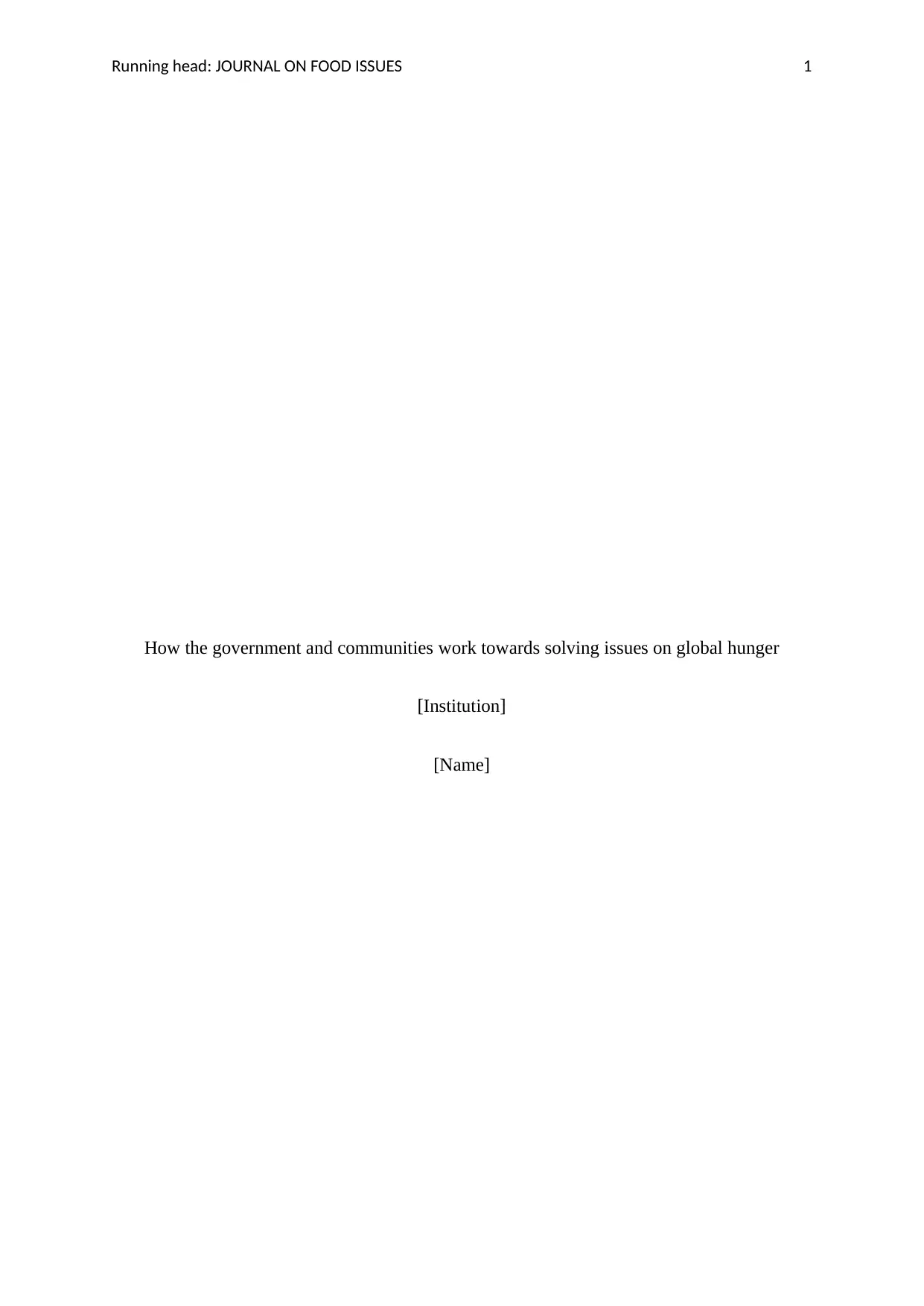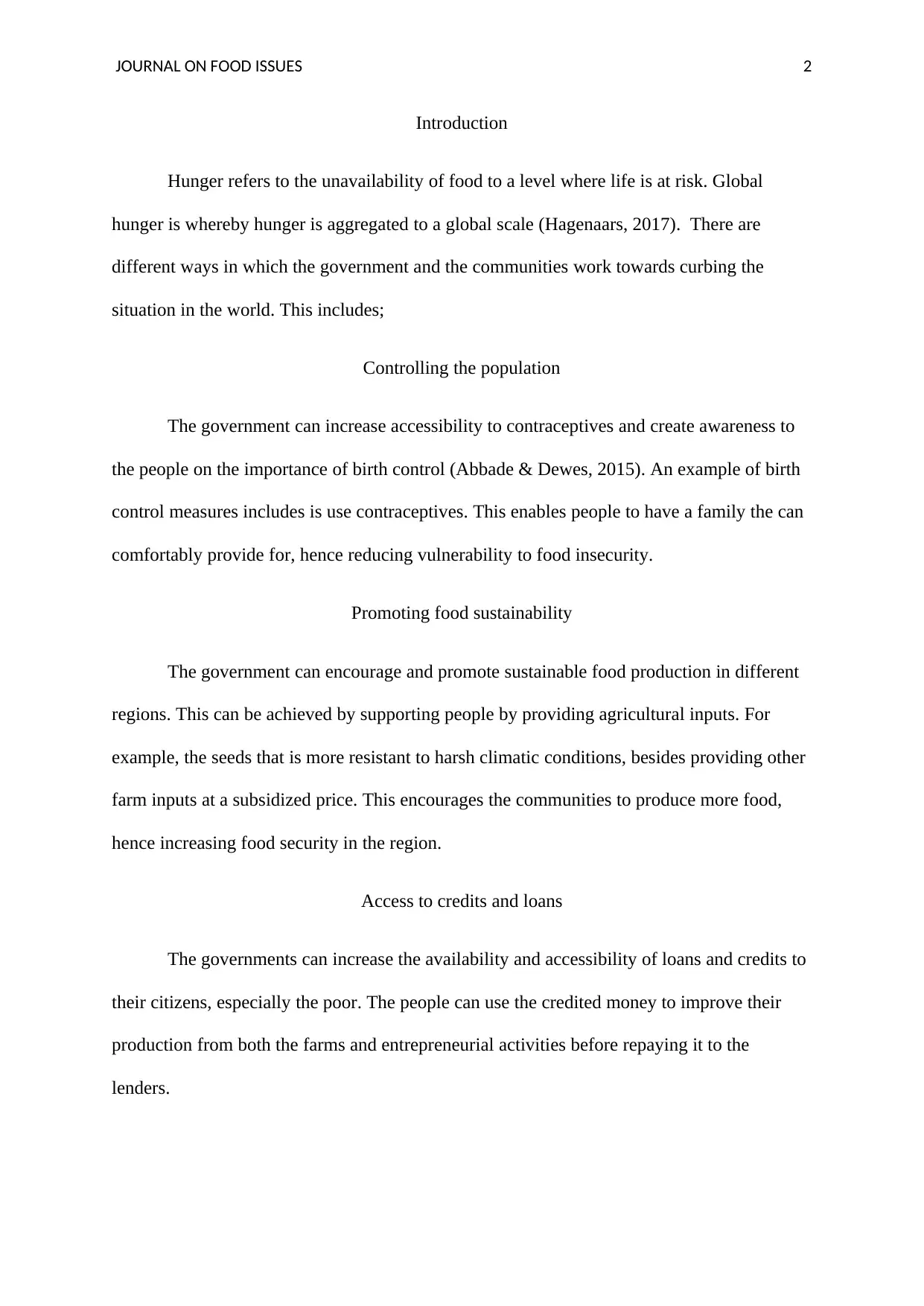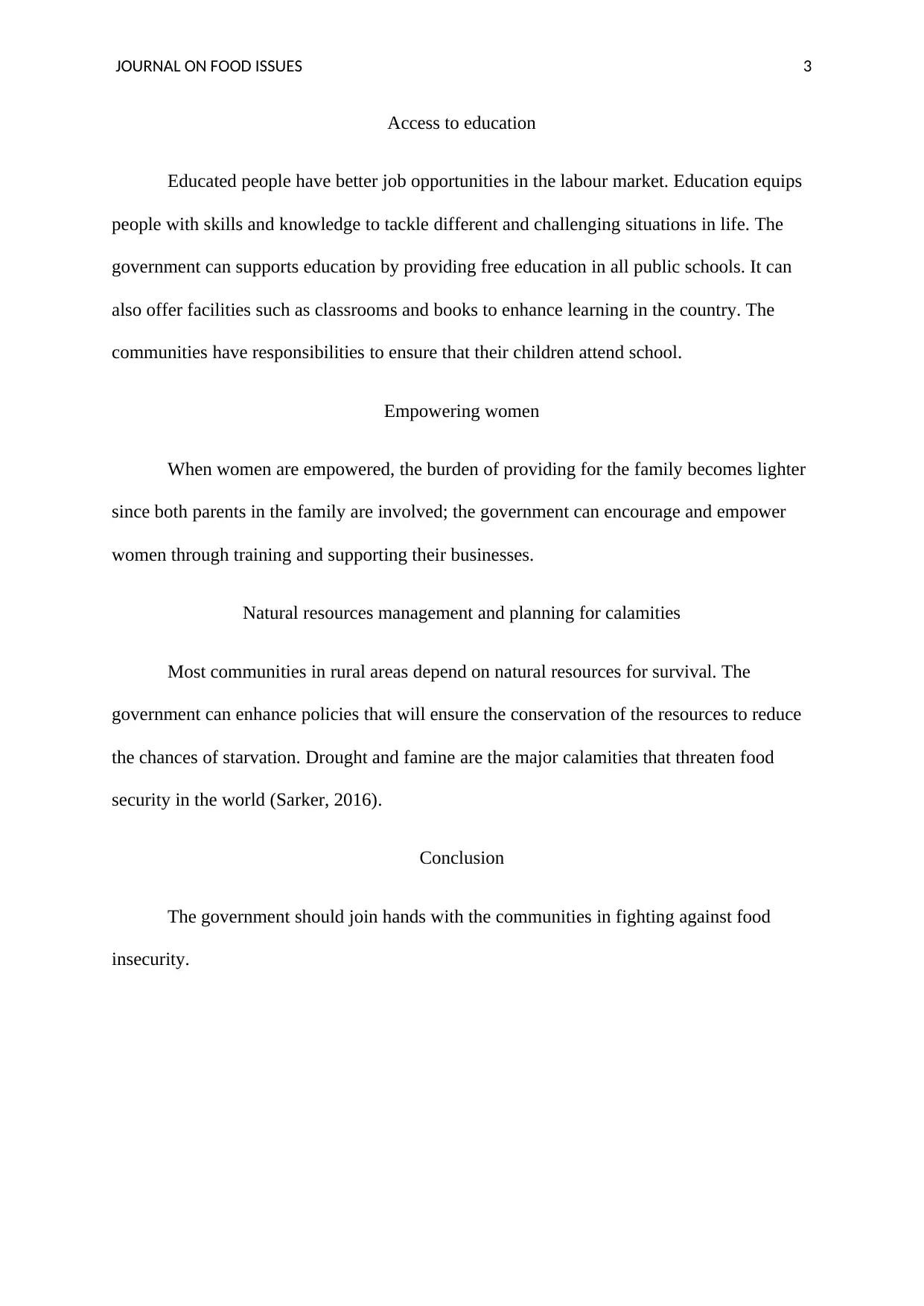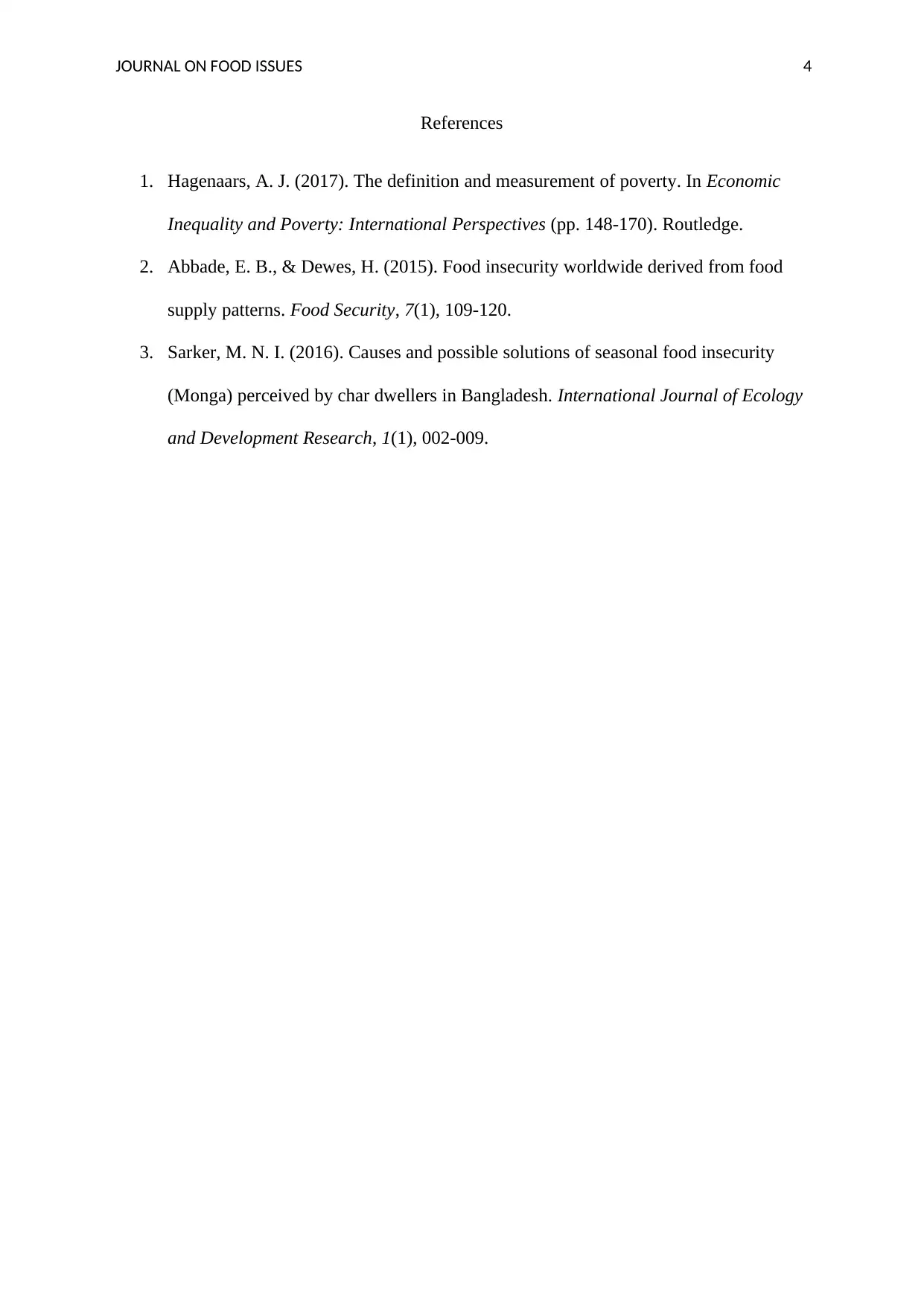Journal on Food Issues: Government and Community Roles and Solutions
VerifiedAdded on 2022/10/18
|4
|562
|18
Journal and Reflective Writing
AI Summary
This journal entry examines the multifaceted issue of global hunger and explores the roles of both governmental bodies and local communities in addressing food insecurity. The journal highlights various strategies, including population control through access to contraceptives and birth control education, promoting sustainable food production by providing agricultural support and access to loans, and emphasizing the importance of education and empowering women to enhance economic stability. The journal also addresses the need for effective natural resource management and preparedness for calamities such as droughts and famines. By integrating these approaches, the journal posits that collaborative efforts between governments and communities are essential for effectively combating global hunger and ensuring food security for all. The author references key studies to support the arguments and provides a comprehensive overview of the issue.
1 out of 4








![[object Object]](/_next/static/media/star-bottom.7253800d.svg)